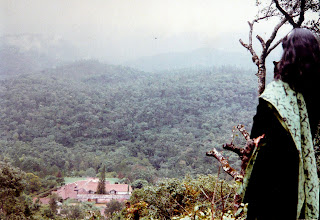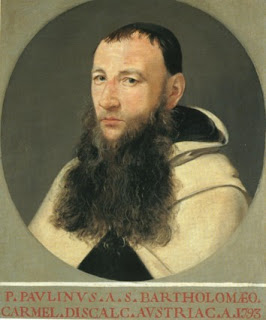Vizzy and an old letter from BCCI
The Board of Control for Cricket in India, BCCI, needs no introduction to the sports lovers of this Country. It is the richest sports organization among other national sports councils in the world. Its annual income exceeds Rs 10000 million. The global media rights for TV transmissions for the games played in India will fetch it USD 610 Million from the production house, Nimbus over the five years upto 2011. Then there is USD 220 Million for the telecast of one day match rights to be received from Zee Telefilms. These are exclusive of other sponsorships and IPL incomes which run to millions of US dollars. One really wonders at the financial clout of BCCI and at the scope for great contributions to sports for which it is capable of.
The BCCI was formed in December 1928. Anthony de Mello, an Anglo Indian, born in Karachi was the founder secretary. R.E. Grant Govan, an English businessman from Delhi was the first president. The Maharajah of Patiala and the Maharajkumar of Vizianagram among others representing the local boards of various provinces and princely states were instrumental in taking this initiative.
I have, in my collection, an official letter of BCCI dated 29th June 1937, addressed to Sir Vijayananda Gajapathi Raju, Maharajkumar of Vizianagram by Anthony de Mello, the Honorary Secretary. The scan of the letter is published herewith. It conveys the information of the resignation of Vizzy as the President of the United Provinces Cricket Association and the election of Raja Syed Mohammad Sa'adat Ali Khan in the place.
I found this letter sent during the formative years of BCCI quite informative. The personalities appearing in the letter are the following.
Sir Vijayananda Gajapathi Raju, (1905-1965), was the son of Pusapati Vijayarama Gajapathi Raju the ruler of Vizianagram, and was popularly known as Maharajkumar of Vizianagram or Vizzy. A man of immense wealth and influence, he was a great patron of the game and was a player, administrator and a politician of significance.
Vizianagram, (Vijayanagaram) the erstwhile princely state forms a part of the district of Andhra Pradesh near the Bay of Bengal. In 1827 Lord Northbrook obtained for Maharajah Vijay Rama Gajapati Raju III of Vizianagram the title of His Highness, with entitlement for a 13 gun salute.
After the death of his father in 1922, Vizzy moved to the family estates in Benares and married the eldest daughter of the ruler of the zamindari land of Kashipur.
Vizzy played only 3 tests and led the Indian tour to England in 1936. During the year, he was knighted by King Edward VIII in the King's Birthday Honours. (Ref: Supplement to the London Gazette, 23 June, 1936.)
He was the President of BCCI from 1954-1957 and served it with great honours. He was instrumental for the development of cricket in the erstwhile United Provinces and the post independent Uttar Pradesh.
Vizzy was the minister of justice in the United Provinces during 1936 and was an MLA too. He became a member of the Lok Sabha from Visakhapatnam in 1960.
The Vizzy trophy cricket tournament is named after the memory of this great patron of the game.
Raja Syed Mohammad Sa'adat Ali Khan was the Taluqdar of Nanpara and Mohammadi in the United Provinces. A Taluqdars was a land holder with administrative power over a district of 84 villages in the United Provinces. The Taluqdar was required to collect taxes, maintain law and order, and provide military supplies and manpower to the provincial government. A Taluqdar was next only to a Raja in extent of land control and social status and was directly under the provincial governor.
President of BCCI and Ruler of Bhopal :Col. HH Nawab Hamidullah Khan was the then President of BCCI. He ascended to the throne in 1926 on the abdication of his mother Sultan Kaikhusrau Jahan Begum who ruled Bhopal from 1901. He had been the Hon. ADC to the Viceroy of India and the Chancellor of the Chamber of Princes.
It is interesting to note that Abida Sultan, heiress and eldest daughter of Nawab Hamidullah Khan, gave up her right to the throne and opted for Pakistan in 1950. Her younger sister Begum Sajida succeeded her to the throne of Bhopal .
Abida Sultan migrated to Pakistan when she was 37 and a mother of a young son and joined the country’s Foreign Service. Her son, Shaharyar Khan was a career diplomat and became the Foreign Secretary of Pakistan and also the Chairman of the Pakistan Cricket Board. If his mother had not given up her claim to the throne, Shaharyar Khan would have become the Nawab of Bhopal as well as the Nawab of Kurwai, since his father was the Nawab of Kurwai.In his post retirement he has penned various books including The Begums of Bhopal -a history of the princely state of Bhopal-and Princess Abida Sultaan - Memoirs of a Rebel Princess, which is the biography of his mother.
Begum Sajida later married Iftikhar Ali Khan the last ruling Nawab of Pataudi. Mansoor Ali Khan, the titular Nawab of Pataudi and former Indian Cricket Captain was her only son. Begum Sajida died in 1995 and Mansoor Ali Khan, husband of Sharmila Tagore and father of the noted Bollywood actor Saif Ali Khan, is now regarded as the titular head of the royal family of Bhopal .
 Grant Govan, First President of BCCI
Grant Govan, First President of BCCIAnthony de Mello (1900-1961)
Founder Secretary of the BCCI, de Mello was an able sports administrator. He was also the President of BCCI from 1946 to 1951. It was during his tenure that India visited England twice and the English team came here for the first time to play official Test matches in 1932-33.
De Mello was instrumental in the formation of the CCI (Cricket Club of India) in 1933 along with others who founded the BCCI. Lord Brabourne, Governor of Bombay, influenced by De Mello had granted land to CCI for the construction of the stadium.
In 1934, De Mello submitted the proposal for the national championship in cricket which later became the Ranji Trophy. He was a bowler worthy of mention and played 11 first class matches.
He also served as the organizing secretary of the first Asian Games at Delhi in 1951.
Palakkad, South India
25th February 2010
photos courtesy: wikipaedia/internet







Comments
You observed it closely!
Regards,
This one seems to be real one - http://www.mid-day.com/sports/2012/nov/091112-Anthony-de-Mello-BCCI-India-England-Test-series.htm